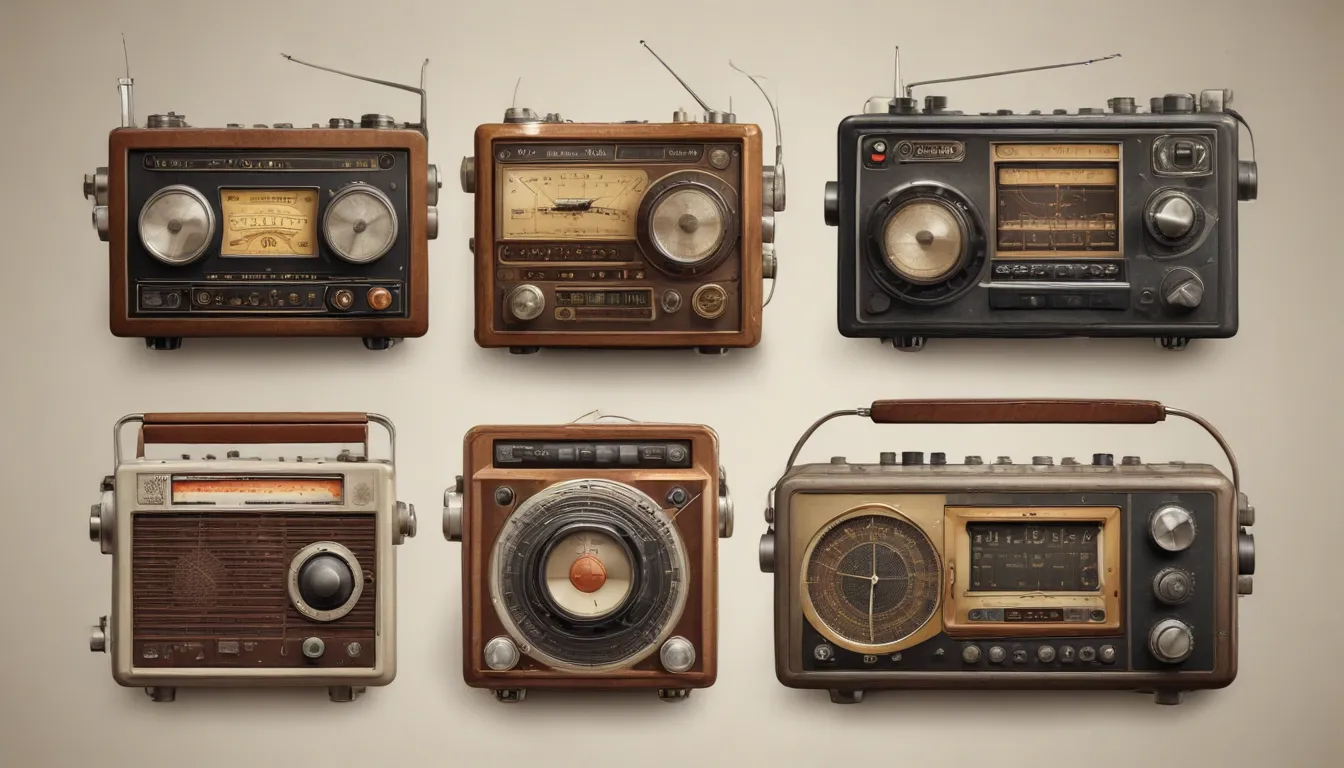A Note About Images: The images used in our articles are for illustration purposes only and may not exactly match the content. They are meant to engage readers, but the text should be relied upon for accurate information.
Radios have been an integral part of our lives for over a century, shaping the way we communicate, entertain, and stay informed. From their humble beginnings in the late 19th century to the digital age of podcasts and streaming services, radios have evolved significantly to meet the changing needs of society and technology. In this article, we’ll delve into 20 fascinating facts about radios that may surprise you. We’ll explore their historical significance, technological advancements, and enduring impact on society. Whether you’re a tech enthusiast, history buff, or simply curious about the world of wireless communication, these facts are sure to captivate your interest and shed light on the captivating journey of radios. So, tune in and join us on this enlightening exploration of the fascinating world of radios.
Key Takeaways:
- Radios have been a vital part of global communication for over a century, evolving to meet the needs of society and technology, from emergency broadcasting to portable listening.
- The “Golden Age of Radio” from the 1920s-1950s marked a pinnacle in radio entertainment, featuring iconic broadcasts and captivating storytelling that captured the imagination of listeners worldwide.
Radios: A Century of Connectivity
Radios have been around for over a century, playing a pivotal role in shaping global communication, entertainment, and information dissemination. These devices have evolved significantly over time, adapting to technological advancements and societal needs.
The first radio transmission occurred in 1901 when Guglielmo Marconi, an Italian inventor, successfully transmitted a radio signal across the Atlantic Ocean, marking a monumental achievement in the history of communication technology.
During World War II, radios played a crucial role in military operations, serving as a primary means of communication and relaying vital information across the battlefield.
The Foundations of Radio Technology
The term “radio” is derived from the Latin word “radius,” signifying the wireless transmission of signals through the airwaves. AM and FM are the two main types of radio transmission, each with distinct characteristics and applications.
In 1930, the first car radio was introduced by the Galvin Manufacturing Corporation, revolutionizing in-car entertainment and communication. The transistor radio, introduced in the 1950s, revolutionized portable listening, allowing people to enjoy music and news on-the-go.
In 1954, the world’s first all-transistor radio, the Regency TR-1, was released, marking a significant shift from vacuum tube technology to transistors, enhancing portability and efficiency.
The Impact of Radio Entertainment
The “Golden Age of Radio” from the 1920s-1950s marked a pinnacle in radio entertainment, featuring popular shows, captivating storytelling, and iconic broadcasts that captured the imagination of listeners worldwide.
Radios have been used for emergency broadcasting since the 1920s, serving as a vital tool for disseminating crucial information during times of crisis and natural disasters.
In 1979, Sony introduced the Walkman, revolutionizing personal music listening and enabling portable, private listening experiences on cassette tapes.
The Rise of Modern Radio Technology
The term “radio waves” was coined by Heinrich Hertz, a German physicist, to describe the electromagnetic waves used in wireless communication. With the rise of television, radio experienced a decline in listenership, prompting the industry to adapt and innovate to remain relevant.
Internet radio platforms have expanded the reach of traditional radio broadcasting, enabling global audiences to access a diverse array of content and transcending geographical boundaries.
HD Radio technology introduced digital technology to traditional radio broadcasting, enhancing audio quality and expanding programming options for a more immersive and dynamic radio experience.
The Future of Radio
Radio jockeys, commonly known as DJs, play a pivotal role in curating music, hosting shows, and engaging with audiences, shaping the listening experience. Satellite radio services offer nationwide coverage with diverse content, delivering high-quality, uninterrupted broadcasts across vast geographical areas.
The “radio frequency spectrum” encompasses a broad range of frequencies, facilitating various forms of wireless communication, including radio broadcasting, telecommunications, and other essential applications.
In the digital age, radio continues to evolve with podcasts, streaming services, and interactive content, remaining a dynamic and enduring medium that adapts to the changing preferences of audiences.
Conclusion
Radios have stood the test of time, evolving alongside technological advancements to remain a fundamental medium of communication, entertainment, and information dissemination. From their early days as a revolutionary invention to their enduring presence in the digital age, radios have left an indelible mark on global culture and society. As they continue to adapt and innovate, radios remain a timeless symbol of connectivity and audio storytelling, enriching the lives of listeners around the world.
FAQs
What was the first commercial radio station?The world’s first commercial radio station, KDKA, began broadcasting in Pittsburgh, Pennsylvania, on November 2, 1920. Its inaugural broadcast marked a significant milestone in the history of radio, ushering in a new era of mass communication.
How do radios work?Radios function by receiving radio waves, which are a type of electromagnetic radiation, and converting them into sound waves through a process called demodulation. This allows the transmission of audio content, making radios an essential medium for entertainment, news, and communication.
Exploring the world of radios can deepen your appreciation for this enduring medium, from the inner workings of iHeartRadio to the intricacies of amateur radio operation, also known as HAM radio. Whether you’re interested in historical facts or cutting-edge technology, radios continue to captivate and inform audiences around the world.






